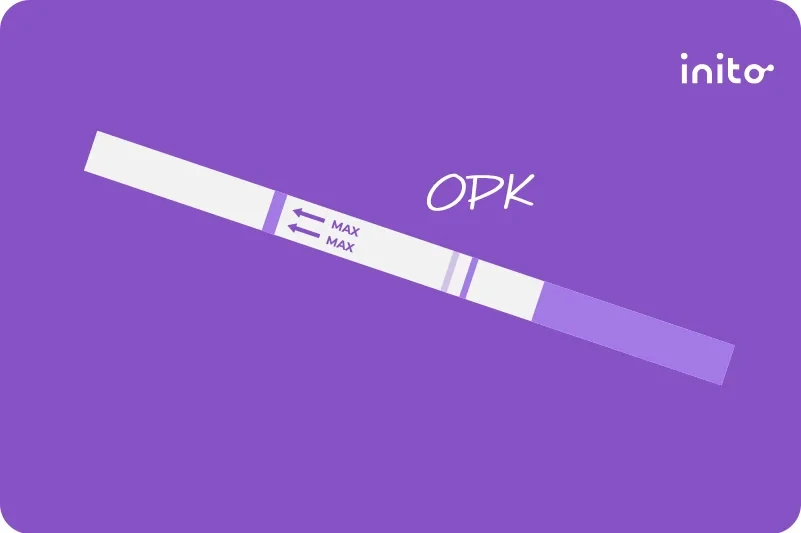Content table
Knowing the signs of ovulation while breastfeeding, may help you control pregnancy.
You may wonder if you can use breastfeeding as birth control after giving birth. This is a method of birth control that people have believed in for centuries.
But can you get pregnant while breastfeeding?
Yes, many women begin ovulating while breastfeeding and can get pregnant. Breastfeeding is a form of natural contraceptive, but it does not work for everyone.
Does breastfeeding prevent pregnancy?
Breastfeeding can have a direct effect on your body in the early period after giving birth. Hormones control milk production, the release of new eggs, and getting ready for a new baby.
Breastfeeding can reduce some of these hormones. That can lower the chances of getting pregnant for some women, but not all.
Breastfeeding can be a form of birth control if all steps are met. This method is the lactational amenorrhea method (LAM).
For this approach to be successful:
- The baby is younger than 6 months old and only breastfeeds (no formula or other foods)
- There can be no more than 4-6 hours between feeding day or night
- You currently have no periods (amenorrhea)
LAM is a birth control option for mothers in the first six months after the baby is born.
After six months, the chances of success go down a lot. Studies have shown that two out of 100 women can still get pregnant while hitting all three areas.
This probability is similar to other contraceptives or birth control methods, based on how effective they can be.
Some affect hormones while others do not. The following birth control methods are listed from most effective to least effective:
Less than 1 pregnancy reported in 100 women/year:
- Implant – 0.05% likelihood of pregnancy – used for up to 3 years
- Intrauterine device (IUD) – 0.2-0.8 likelihood of pregnancy- Hormonal used for 3-7 years; Copper T used up to 10 years
6-12 pregnancies in 100 women/year:
- Injection – 6% likelihood of pregnancy – a shot every 3 months
- Oral pill – 9% likelihood of pregnancy
- Patch – 9% likelihood of pregnancy
- Vaginal ring – 9% likelihood of pregnancy
- Diaphragm – 12% likelihood of pregnancy
18 or more pregnancies in 100 women/year
- Male condoms – 18% likelihood of pregnancy
- Female condoms – 21% likelihood of pregnancy
- Cervical cap – Approximately 20% likelihood of pregnancy
- Sponge – 12-24% likelihood of pregnancy
- Fertility awareness method – 24% likelihood of pregnancy
All of these methods depend on accurate use. None are fully effective if not used as directed.
Keep in mind
Breastfeeding does not prevent your menstrual cycle from returning. While this seems to happen for some women, it does not happen in all women. Everyone is different. Others find their cycle returns 4-6 weeks after giving birth while breastfeeding.
Your body is changing now that the baby is born.
A lot changes over nine months while the baby is developing. Now, during what is often called the ‘fourth trimester’, there are many changes again. After your baby is born, your body works to return to a nonpregnant state. Not the same as it was, but that of a non-pregnant woman.
- Your uterus will slowly return to its normal size, taking up to six weeks to get there. Your ovaries release progesterone early in pregnancy until the placenta takes over. Then they generally rest, waiting for the return of ovulation.
- Estrogen and progesterone levels were high during pregnancy but dropped after delivery. The ovaries do not release more progesterone until the first menstrual cycle begins.
- Oxytocin is released by the hypothalamus – a part of the brain – and helps the milk flow from the ducts to the nipple. This “love hormone” also boosts bonding between mother and baby.
- Lactation usually begins within the first week of delivery. Colostrum develops during pregnancy, containing protein and immunities that protect the newborn. Prolactin, a hormone that promotes lactation, increases and milk production begins.
- During these first several weeks, you will notice a lot of vaginal discharge called lochia. At first, it is blood and tissue from the uterus. After a few days, this will change to a light brown or yellow color. Finally, the lochia becomes white mucus. This can last up to five weeks.
- If the mother is not breastfeeding, prolactin levels will not increase. High prolactin levels can slow the ovaries from returning to the pre-pregnancy level. That means that if the mother is breastfeeding, ovulation may not return right away.
How does breastfeeding act as a contraceptive?
As the body goes through all of these changes, the hormones go up and down.
- Rising prolactin supports breast milk production causing Follicle Stimulating Hormone (FSH) to dip.
- These hormones are regulated by the intensity and frequency of the baby’s suckling reflex.
- Suckling stimulates the nerves in the nipple that send signals to the brain to release prolactin and oxytocin.
- Prolactin and oxytocin travel to the breast and promote milk production. Prolactin is highest for the first 30 minutes of the feeding, making the most milk. Oxytocin causes letdown, makes the milk flow, and fills the ducts.
- This hormone cycle is not the same when pumping because the baby stimulates letdown but pumping may not. Pumping may need massage, warming, or additional stimulation to prompt letdown.
- This process creates supply and demand. The more demand the baby signals, the more supply is created.
- During these hormone fluctuations, FSH is down, preventing the egg from being released, and delaying the possibility of pregnancy.
So, what’s ovulation?
Ovulation is when your ovary releases the egg and it moves toward the uterus. The egg stays in the fallopian tube for 12-24 hours waiting for fertilization by the sperm. This usually occurs around 12-14 days before your menstrual cycle. If the egg is not fertilized, it passes out during the period.
How do I know if I'm ovulating?
Signs of ovulation may be hard to notice in the first six weeks after giving birth due to bleeding and lochia. Some women do not ovulate before six weeks, but others do.
It is important to know that pregnancy is possible during this time. Providers encourage women not to begin sexual activity until after their six-week follow-up. Though many do before that visit.
Signs of ovulation after giving birth
Ovaries release the egg before your period happens. It can help to know your cycle and when the egg comes. You might miss ovulation if you aren’t sure when this will happen.
If you don’t know your regular cycle, here are some signs that can help you determine if you are ovulating:
- Changes in vaginal discharge. Right before ovulation, there is an increase in clear, stretchy mucus. These secretions resemble egg whites. After ovulation, the mucus gets thicker, cloudy, and may not even be noticeable.
- Increase in basal body temperature. A slight increase in resting body temperature occurs during ovulation. This method requires checking your temperature each morning before getting out of bed. Watch for a pattern to emerge. You’ll be most fertile 2 to 3 days before your temperature rises.
- Other symptoms are less reliable like ovulation cramps, breast tenderness, or increased desire. You may or may not have these symptoms.
- Ovulation tests are available to check hormone changes that predict ovulation. These are like pregnancy tests you can do at home that work by urinating on a test strip.
- Hormones fluctuate a lot due to breastfeeding. If you’re unsure of the signs or they are inconsistent, monitoring hormone levels is the most reliable option.
Since ovulation happens before your first period, you should not expect to have your period as a sign that you will need to watch for ovulation. If attempting to use ovulation methods as birth control options, keep this in mind.
How does breastfeeding affect pregnancy?
So, can I get pregnant while breastfeeding?
The answer is yes and no.
If done right, LAM can be an effective birth control method. But, not every woman will go a full six months without her menstrual cycle returning. You can get pregnant while breastfeeding before your period returns since you ovulate first and only then get your period.
Can I keep breastfeeding if I want to get pregnant?
If the conditions are right, yes, pregnancy can happen while breastfeeding. If you see signs of ovulation, you have the possibility of getting pregnant. Some women have reported that they did not have a period and got pregnant.
If your period returns at any point during breastfeeding, LAM is no longer a birth control option for you. You can get pregnant without the use of a barrier or birth control.
When your baby reaches 6 months old or starts eating other foods, you end the LAM and can get pregnant.
Exclusive breastfeeding recommendations are until the baby is 6 months old. Mothers are encouraged to breastfeed through the first year or more. If you breastfeed after the first six months, LAM is no longer an effective birth control method. You could get pregnant any time after this.
Can I breastfeed while pregnant?
As above, breastfeeding is recommended for the first year. Many mothers choose to breastfeed this long or longer.
In most healthy pregnancies, breastfeeding is encouraged. Generally, it will not cause any problems for you, your growing baby, or your pregnancy.
Does being pregnant mean I need to stop breastfeeding?
Becoming pregnant does not mean you need to stop breastfeeding. Many breastfeeding mothers will breastfeed during their pregnancy.
Some continue to breastfeed both the new baby and the older child together. Others may wean the older child at some point before the new baby arrives. These are personal choices.
This is a safe choice unless your provider says you have a high-risk pregnancy. Experts report there is no truth to the reports that breastfeeding while pregnant can cause early labor.
When should I visit my doctor?
- Your period has not started within five to six weeks of weaning from breastfeeding, especially after the baby is 6 months old.
- If your cycles are irregular after weaning.
- If you have no signs of ovulation after 2 years, despite stopping breastfeeding
If at any point you have concerns, contact your doctor.
Breastfeeding and Ovulation: Rundown
- Breastfeeding can be used as a way to prevent pregnancy.
- It only works under certain circumstances and it does not work for everyone.
- Understand the lactational amenorrhea method (LAM) before you decide if it’s right for you.
- Breastfeeding is not guaranteed to prevent ovulation or pregnancy. You can continue breastfeeding during pregnancy in most situations.
- Ovulation happens before your period and may happen without you getting your period post-delivery resulting in your next pregnancy if the egg gets fertilized.
- Watching for signs of ovulation can be helpful in preventing or planning pregnancy.
Was this article helpful?
- https://www.ncbi.nlm.nih.gov/books/NBK555904/
- https://www.ncbi.nlm.nih.gov/pmc/articles/PMC6992410/
- https://www.sciencedirect.com/science/article/pii/B978012814823500009X
- https://www.mayoclinic.org/healthy-lifestyle/getting-pregnant/expert-answers/ovulation-signs/faq-20058000
- https://www.health.harvard.edu/blog/can-breastfeeding-really-prevent-pregnancy-202203022697
- https://pubmed.ncbi.nlm.nih.gov/1346183/












